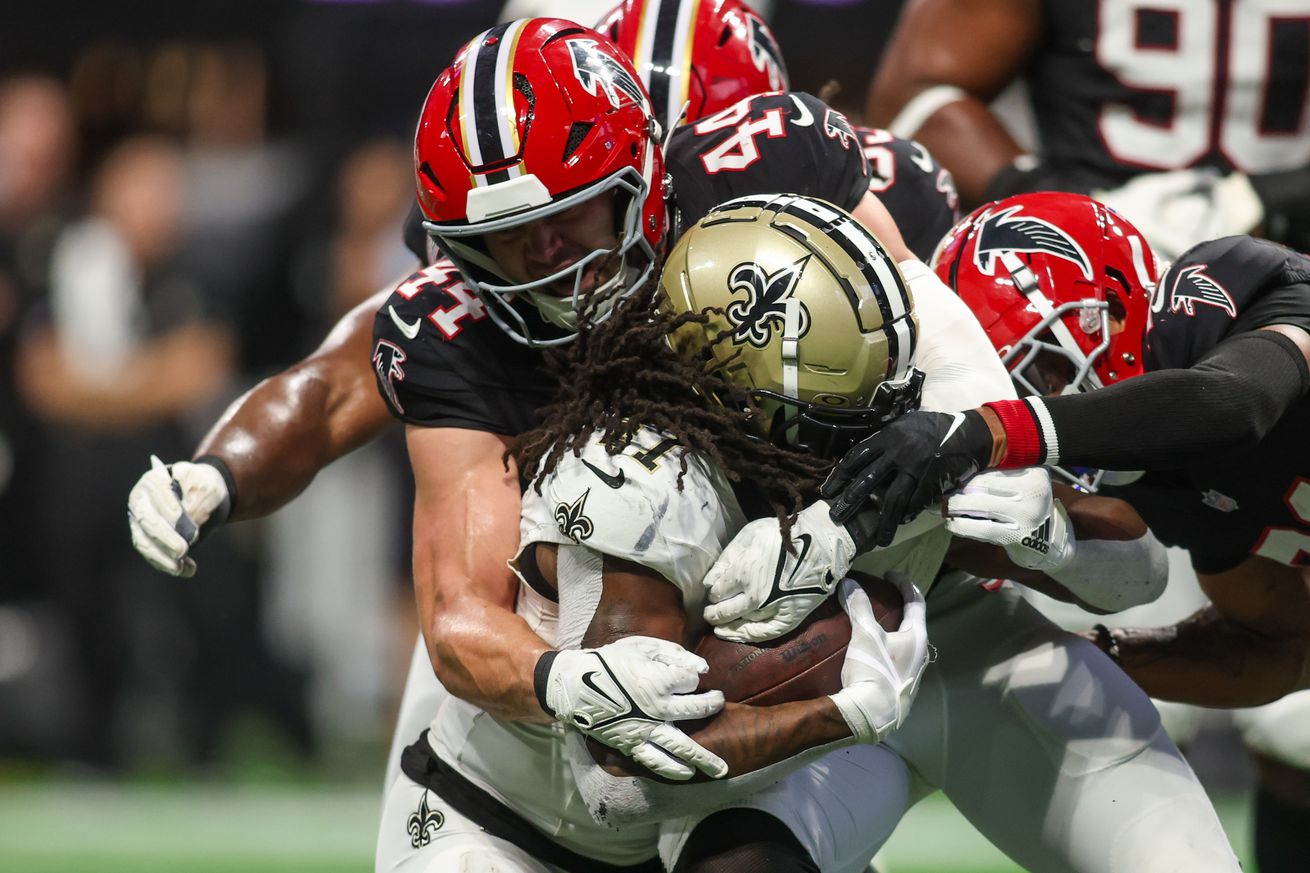
Falcons offense and defense can work hand-in-hand to limit Saints offensive attack.
The Atlanta Falcons can extend their undefeated streak within the NFC South with a win over their hated rival New Orleans Saints this weekend. But to do so, the Falcons must slow down a Saints’ offense attack that thrives on early-down success.
There are just two stats that you need to know to understand why the Saints, who through the first two wins looked like the most potent offense in the NFL, have looked anything but in seven consecutive losses since.
According to Running Backs Don’t Matter, through two games, the Saints ranked first in the NFL in Expected Points Added per play on first and second down in their two season-opening wins. In the seven losses since, they rank 31st in that same metric. Essentially, the Saints offensive success hinges on their ability to run the ball effectively and generate explosive plays off play action on early downs. They did that effectively in the first two games of the season, but have struggled in the nearly two months since.
If the Falcons want to continue to stymie the Saints, they’ll have to keep that trend going by bottling up their run and pass game on early downs. The Falcons can do that both with their offense and defense performing at a high level this Sunday.
Defensively, Atlanta’s path to success should be obvious. Stopping the run and limiting explosive plays via play action hold the key. However, the Falcons run defense has been anything but stout this year, with the team ranked 23rd in rushing yards allowed. The Falcons have allowed over 100 yards rushing in every game this year, including 137 yards to a Dallas Cowboys offense that entered Week 9 ranked 31st in rushing.
Yet, the Falcons should fare better stopping the run against the Saints than they have against other opponents. The run defense should get a boost from the return of linebacker Troy Andersen to the lineup, after missing five games due to a knee injury. Andersen earned NFC Defensive Player of the Week honors after playing the Saints in Week 4, partly due to his sideline-to-sideline pursuit ability helping to keep Saints running back Alvin Kamara contained.
The Saints also play a hefty dose of “21” and “12” personnel on offense, which feature a fullback and two tight ends, respectively. That should allow the Falcons to rely more on their base defense instead of the nickel defense that often gets deployed when the opposing offense is in “11” personnel with three wide receivers. Opponents have had much success running against the Falcons nickel fronts, which feature fewer players in the box.
It’s why the Falcons, according to Next Gen Stats, rank with the seventh-highest usage of light boxes featuring six or fewer defenders to play against the run. In their previous Saints matchup, the amount of light boxes the Falcons had was about half the rate of their season total.
Offensively, the Falcons need to score points to help slow down the Saints’ early-down offense. Getting an early lead can force the Saints to abandon their run game and throw the ball while trying to play catch-up.
If the Falcons offense and defense can work together to slow down the Saints on early downs, it should lead to more success on critical third and fourth downs. Last week against the Cowboys, the Falcons generated a season-high three sacks, partly due to the pass rush being in more advantageous situations thanks to their early lead and Dallas being behind the chains. The Falcons frequently used stunts and twists to maximize their pass rush against the Cowboys. Defensive tackle Grady Jarrett and linebacker Kaden Elliss thrived on those stunts to create a lot of pressure and could do the same this week, thus bolstering the Falcons’ anemic pass rush.
If the Falcons can limit the Saints on early downs, leading to more success on late downs, it should ruin the fun of interim head coach Darren Rizzi and hand him his first loss.
